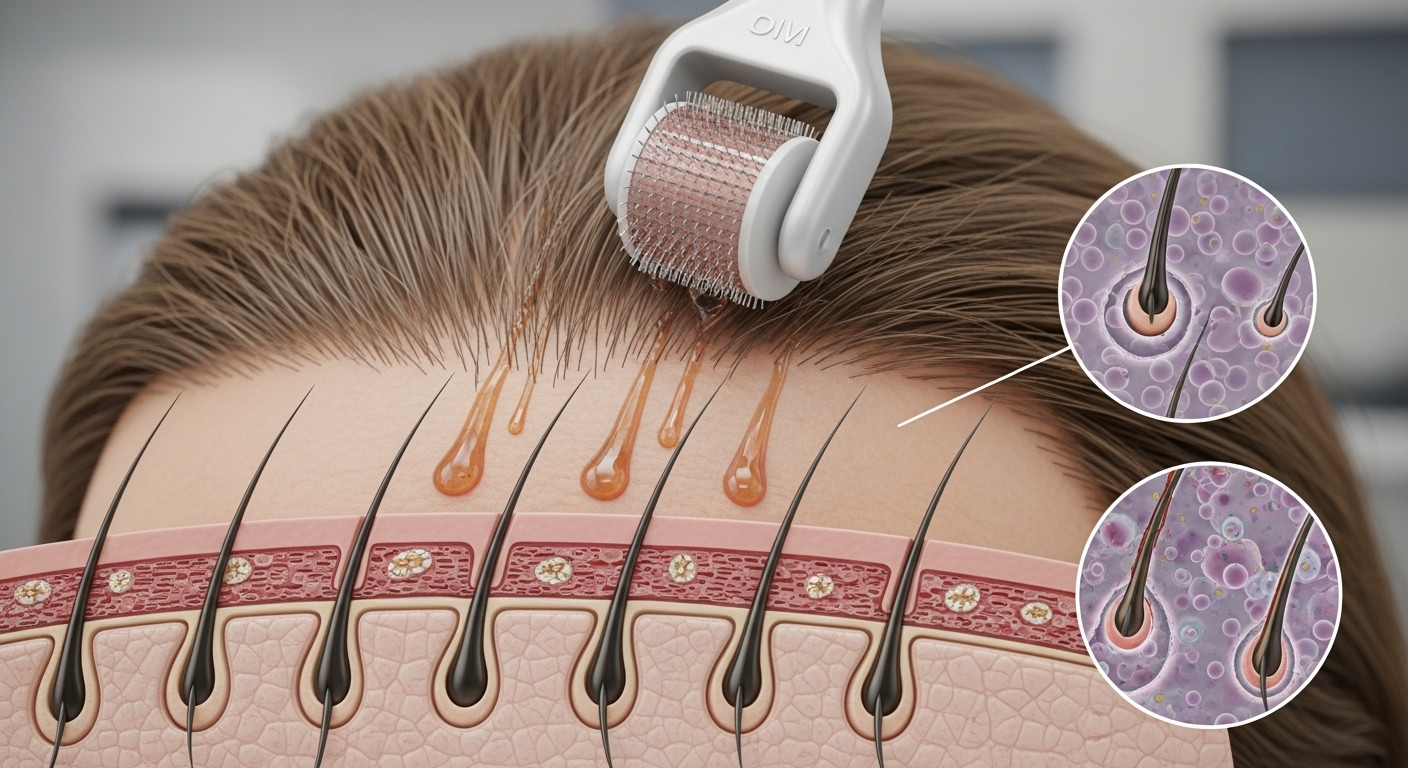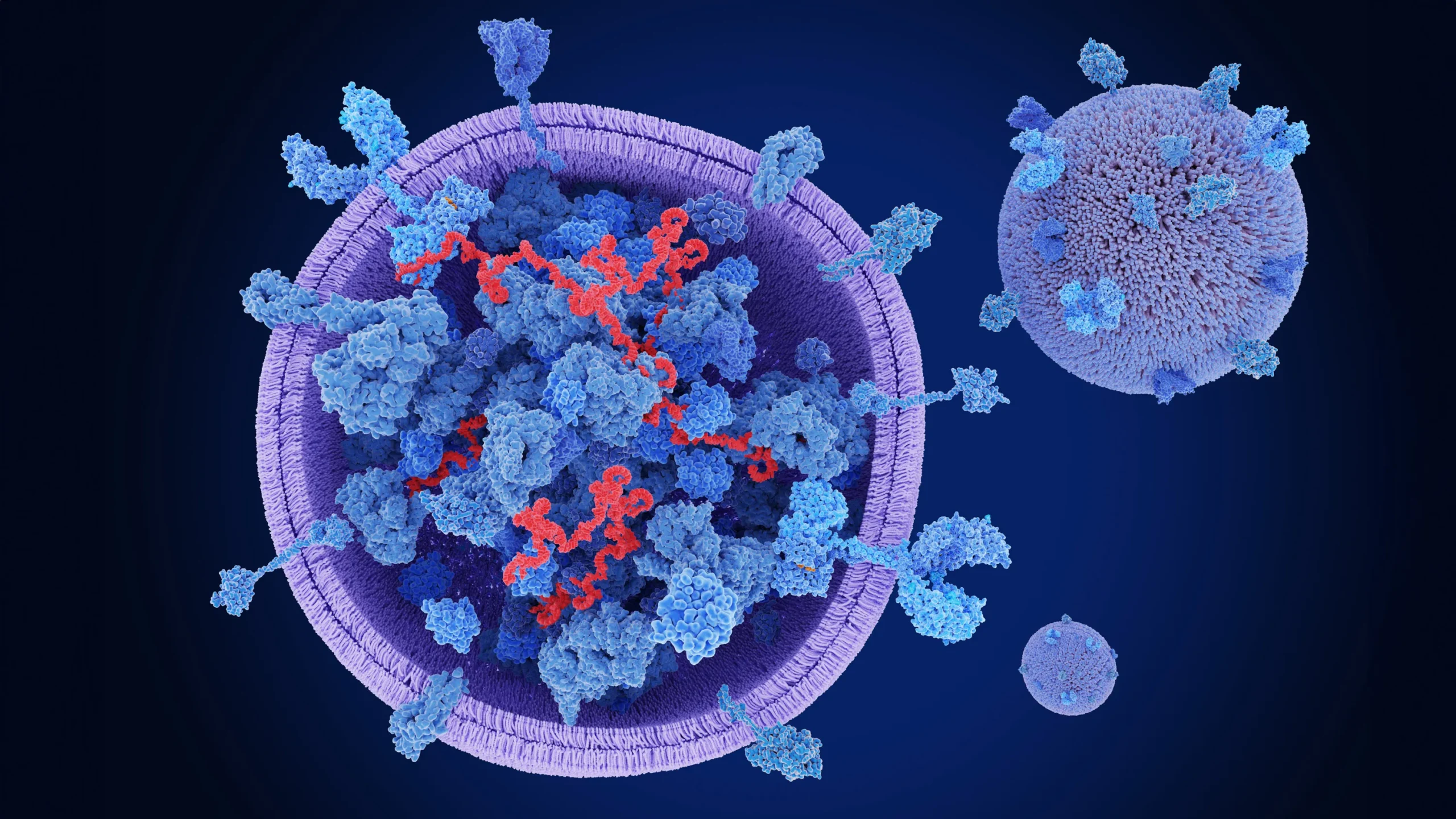Struggling with hair loss and looking for a solution that doesn’t involve invasive surgery? Microchanneling may be the breakthrough you’ve been waiting for. This non-invasive treatment works by stimulating your scalp to promote natural hair regrowth, offering a gentle yet effective alternative to traditional hair restoration methods. In this article, we’ll explore how microchanneling works, …
Struggling with hair loss and looking for a solution that doesn’t involve invasive surgery? Microchanneling may be the breakthrough you’ve been waiting for. This non-invasive treatment works by stimulating your scalp to promote natural hair regrowth, offering a gentle yet effective alternative to traditional hair restoration methods.
In this article, we’ll explore how microchanneling works, its benefits, and how it compares to other treatments for hair loss. Whether you’re looking to thicken your hair or combat hair thinning, this guide offers insights and expert advice to help you regain confidence.
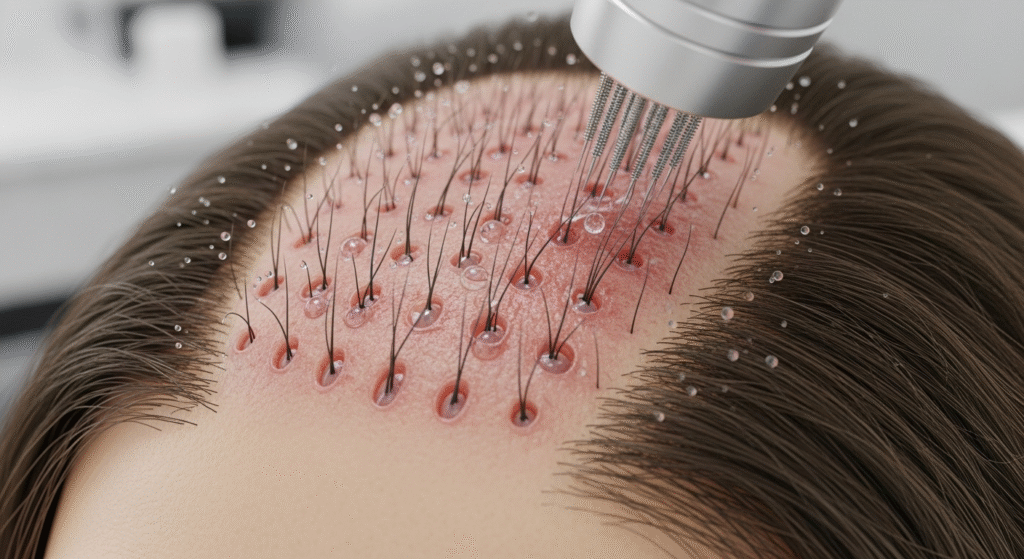
What is Microchanneling and How Does it Work for Hair Loss?
The Basics of Micro-channeling
Microchanneling, also known as collagen induction therapy, is a non-invasive procedure that uses tiny needles to create microchannels in the skin. These tiny punctures stimulate the body’s natural healing process, promoting the production of collagen and elastin. When performed on the scalp, it enhances hair follicle activity, encouraging hair regrowth in areas affected by thinning or hair loss.
How Micro-channeling Works to Treat Hair Loss
The procedure works by triggering a natural healing response in the scalp. As the microchannels are created, growth factors are released to revitalize dormant hair follicles. Additionally, microchanneling can be combined with topical treatments such as PRP (platelet-rich plasma) or hair growth serums to improve their absorption and effectiveness, leading to enhanced results.
Key Benefits of Microchanneling for Hair Regrowth
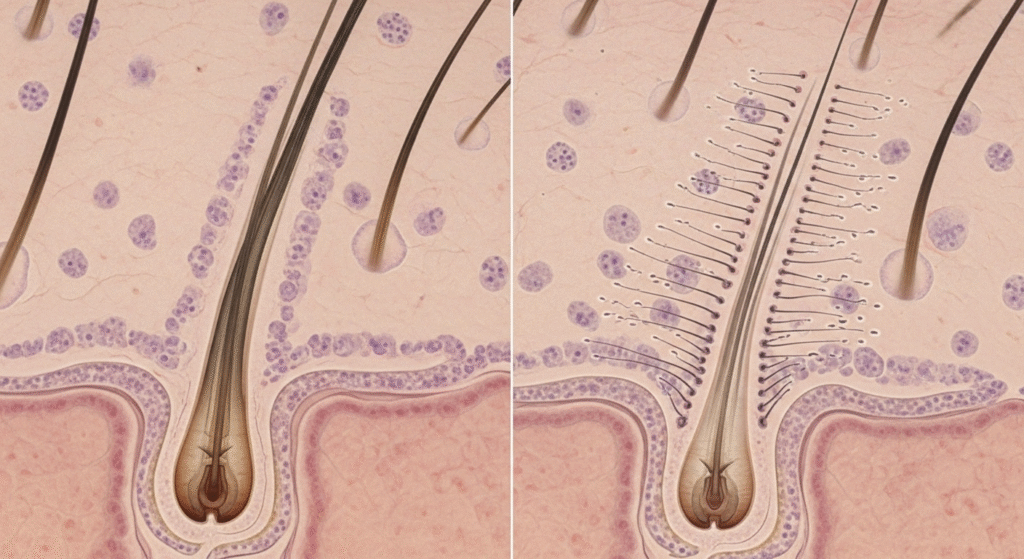
Non-Invasive and Minimal Downtime
Unlike hair transplants or other surgical methods, microchanneling is a non-invasive procedure that requires no incisions. As a result, recovery time is minimal. Most people can resume their regular activities within a day or two after the procedure.
Enhanced Product Absorption
Microchanneling enhances the absorption of topical treatments. By creating microchannels in the skin, it allows for deeper penetration of hair growth serums, ensuring that the active ingredients are delivered directly to the hair follicles. This increases the overall effectiveness of hair restoration products.
Safe for Most Skin Types
Microchanneling is generally safe for individuals with various skin types and hair conditions. Unlike chemical treatments or laser therapies, it doesn’t involve harsh chemicals or heat, making it a suitable option for people with sensitive skin. However, it’s important to consult with a specialist to determine if you’re a good candidate for the procedure.
How Effective is Micro-channeling in Treating Hair Loss?
Success Rates and Clinical Studies
Microchanneling has shown promising results in treating hair loss. According to clinical studies, patients have experienced significant improvements in hair density and follicle stimulation after a series of treatments. On average, it may take 3-6 sessions, spaced 4-6 weeks apart, to achieve visible results. However, individual results may vary.
Short-Term vs. Long-Term Results
After the first session, many patients report feeling that their hair looks fuller and thicker. In the long run, microchanneling can significantly slow down hair loss while stimulating regrowth in areas with thinning hair. For optimal results, ongoing maintenance treatments may be necessary, but they are less frequent than initial sessions.
What to Expect During and After a Microchanneling Session
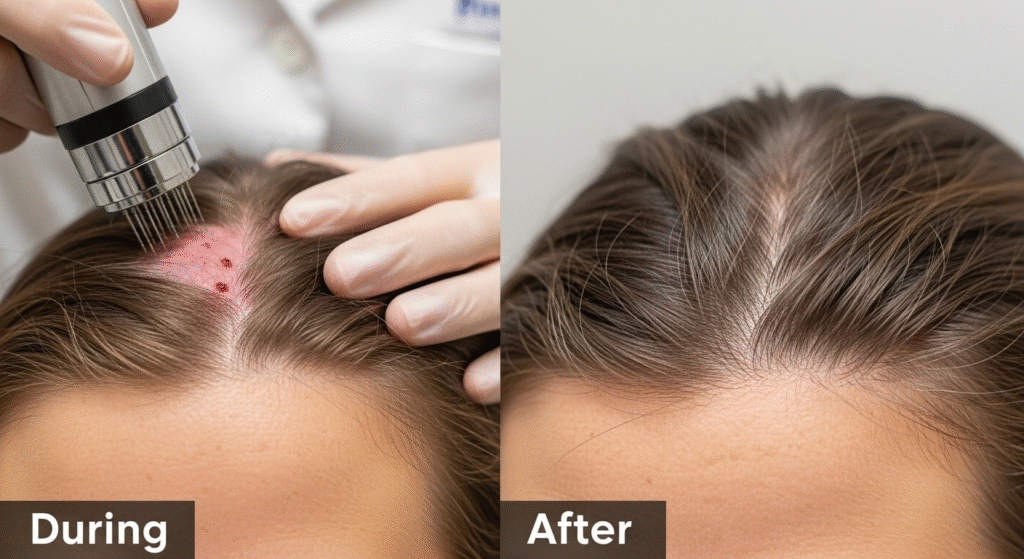
Step-by-Step of a Micro-channeling Procedure
- Consultation: A dermatologist or hair restoration specialist will assess your scalp to determine the areas that need treatment.
- Preparation: A topical numbing cream will be applied to minimize discomfort during the procedure.
- Microchanneling: The practitioner will use a device equipped with tiny needles to create microchannels in the scalp.
- Post-Treatment Care: After the procedure, your scalp may be slightly red, but this should subside within a few hours.
Recovery and Aftercare Tips
- Avoid Scratching: The treated areas may feel sensitive, so avoid scratching your scalp.
- Use Gentle Shampoo: For the first 48 hours, opt for a mild, sulfate-free shampoo.
- Limit Sun Exposure: Protect your scalp from direct sunlight for a few days following the procedure to avoid irritation.
Expert Opinions on Microchanneling for Hair Regrowth
Real-World Experiences: Patient Stories
Many patients who have undergone microchanneling for hair loss report noticeable improvements in hair texture, thickness, and overall appearance. For example, Sarah, a 34-year-old woman, saw her hair become noticeably fuller within 4 months of treatment. “I was skeptical at first, but after three sessions, I noticed new growth along my hairline,” she shares.
FAQs
Can Microchanneling Work for Severe Hair Loss?
Microchanneling is most effective for individuals with early to moderate hair thinning. While it may not be a complete solution for advanced baldness, it can still help improve the overall health of the hair follicles and slow down further loss.
Is Microchanneling a One-Time Treatment or Ongoing?
Microchanneling usually requires multiple sessions to achieve visible results, and ongoing treatments may be needed to maintain hair growth. Once the desired results are achieved, maintenance treatments every 4-6 months are recommended.
How Does Microchanneling Compare to Hair Transplants?
Unlike hair transplants, which involve the surgical relocation of hair follicles, microchanneling stimulates natural regrowth using the body’s own healing process. It is less invasive, has a faster recovery time, and is more affordable than hair transplant surgery. However, it is generally more suitable for those with mild to moderate hair loss.
Are There Any Risks or Side Effects?
Microchanneling is generally safe, but some patients may experience mild redness, swelling, or itching in the treated area. These side effects usually subside within a few hours to a day. It’s important to follow aftercare instructions to reduce the risk of infection or irritation.
Ready To Take Your Next Step
Book a consultation with Dr. Uzma Irfan, an ISHRS-certified surgeon in Islamabad today to discover how microchanneling can help you restore your hair and boost your confidence. Our expert specialists are here to provide personalized solutions to meet your hair restoration needs. Don’t wait—schedule your appointment today!

